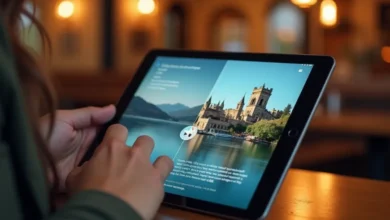Stop Sign Image: A Simple Guide for Blogs and Safety

stop sign image is bright and easy to see. A stop sign image tells drivers to stop. It tells walkers and bike riders to wait. This picture is strong because it uses red color and a big shape. When you see a stop sign image you can stop in time. On a blog, a stop sign image shows rules and gives a clear idea to the reader. You can put it near text about traffic, safety, or school rules. Make sure the stop sign image is clear and not blurry. Use simple words when you write about it so kids and grown-ups both can read. Try to show a big picture and add a short caption. Captions help readers know why the stop sign image is there. Always check that the size fits your page.
Using a stop sign image on your blog is easy when you follow some simple tips. First, use pictures you have permission to use. Take your own photo, use free stock sites, or buy a picture that lets you use it. Always read the license and give credit if the picture asks for it. Next, write a short alt text for the stop sign image so people who use screen readers can understand the picture. Alt text also helps search engines find your post. Keep the alt text one clear sentence. Add a small caption to explain why you used the stop sign image. Save the picture in a good file type: JPG for photos, PNG or SVG for simple signs. Resize the image so your page loads fast on phones. Don’t stretch or blur the picture. If you edit the image, keep the sign shape and colors true so it stays clear. For school posts, show simple notes about safety. For blog posts, add a line about where you got the image. These steps help your readers trust your page.
Why a stop sign image matters for road safety
Road safety is one of the most important reasons for the stop sign. A stop sign image reminds people that safety comes first. On busy roads, drivers must stop so other cars or walkers can pass safely. If there was no stop sign, accidents could happen more often.
The color red is chosen on purpose. Red is a color that catches attention fast. Even if you are not looking closely, your eyes will see it. The big letters are clear and simple to read. That is why the stop sign image works so well everywhere.
When you show a stop sign image in a school project, safety lesson, or blog, you teach others how to stay careful. Kids learn early that this sign means “be safe.” Grown-ups also need reminders, and images do that better than just words.
Where to find safe and legal stop sign images
When you need a stop sign image for your blog, you should always make sure it is safe and legal to use. Not every image on the internet is free. Some are owned by photographers or websites. Using those without permission can cause problems.
Here are some safe ways:
- Take your own photo of a stop sign near your home.
- Use free stock photo websites like Unsplash, Pixabay, or Pexels.
- Buy images from stock websites if you want high quality.
- Check Creative Commons license for free use rules.
Always read the rules on the website. Some stop sign images require you to give credit to the photographer. A small line like “Photo by John on Unsplash” under the picture is enough.
How to make a clear stop sign image for your blog
A stop sign image should always be clear and easy to see. If the picture is blurry or too small, readers may not understand it. That is why you should check the quality before uploading.
To make a clear image:
- Use a good camera or high-quality stock photo.
- Keep the red color bright and true.
- Make sure the letters are not cut off.
- Avoid too much background that distracts the viewer.
If you are editing the stop sign image, do not change its shape or color. A blue or round stop sign might confuse readers. Always keep it in the real format so that it teaches the right meaning.
How to write alt text for a stop sign image (easy steps)
Alt text is a short description of the image. It helps people who use screen readers understand the picture. It also helps search engines know what the image is about.
For example, if you use a stop sign image, you can write alt text like:
“Red stop sign with white letters used for road safety.”
Tips for writing alt text:
- Keep it short (under 15 words).
- Say what is in the picture.
- Add the word stop sign image naturally.
- Do not stuff too many words.
This way, your blog is more user-friendly and also ranks better on Google.
Stop sign image SEO: good titles, captions, and tags
When you use a stop sign image, SEO (Search Engine Optimization) is important. Adding the right titles, captions, and tags helps search engines show your post to more people.
Here is what you can do:
- Title: Name your picture file like stop-sign-image.jpg instead of random numbers.
- Caption: Add a short caption under the photo. Example: “A clear stop sign image used in traffic safety lessons.”
- Tags: Add tags like stop sign, road safety, traffic rules.
Doing this helps your stop sign image appear in Google Images search. That means more visitors can find your blog.
Best file types for a stop sign image: JPG, PNG, SVG
Choosing the right file type is also important. Each file type has its own use.
- JPG: Best for photos. It is small in size and loads fast.
- PNG: Best for signs with simple colors and sharp edges. Keeps quality high.
- SVG: Best for digital designs, logos, or when you want to resize without losing quality.
When you save your stop sign image, think about where you will use it. If it is just a blog post, JPG works well. If it is for a teaching guide or printable worksheet, PNG or SVG is better.
How to resize a stop sign image for fast pages and phones
Big images can slow down your blog. Readers on phones may leave if the page takes too long to load. That is why resizing is important.
To resize a stop sign image:
- Use tools like TinyPNG or Canva to make the file smaller.
- Keep the size around 100 KB if possible.
- Make sure the picture is not stretched or blurry.
When the stop sign image loads fast, your blog works better. Readers stay longer, and Google may rank you higher.
Do’s and don’ts when using a stop sign image on your site
Here are some quick rules to follow:
Do’s:
- Do use high-quality and legal images.
- Do add alt text and captions.
- Do resize images for faster loading.
Don’ts:
- Don’t copy random pictures without permission.
- Don’t change the red color or shape.
- Don’t use blurry or low-quality photos.
Following these rules makes your blog safe, clear, and trustworthy.
How to use a stop sign image to teach kids about safety
A stop sign image is very useful in schools and blogs for kids. Teachers use it to explain traffic safety in a simple way. Parents can also use it in lessons at home.
Here are some fun ideas:
- Print the stop sign image and use it in classroom games.
- Add it to coloring pages for kids.
- Use it in blog posts that teach road safety tips.
- Make flashcards with traffic signs, including the stop sign.
When kids learn with pictures, they remember rules faster. A stop sign image makes the lesson fun and clear.
Copyright and fair use tips for a stop sign image
Even though the stop sign design is public, some photos of it may still be owned by someone. That means you cannot just take any stop sign image from Google.
Always:
- Use free stock or your own photos.
- Read the license carefully.
- Give credit if required.
- Avoid watermarked images.
This keeps your blog safe and shows respect for creators.
Conclusion
A stop sign image is more than just a picture. It is a strong tool for safety, teaching, and clear blogging. When you use it on your blog, remember to keep it legal, clear, and optimized. Add alt text, captions, and the right file type. Resize it for fast loading and keep the true shape and color. Whether for road safety lessons, school projects, or blogs, a stop sign image helps readers understand quickly. It is simple, powerful, and always useful.
FAQs
Q1. Can I use any stop sign image from Google?
No, not all are free. Always check copyright or use free stock photo websites.
Q2. Do I need to give credit for a stop sign image?
Yes, if the license says so. Some free photos need credit, others do not.
Q3. What is the best format for a stop sign image?
JPG is good for blogs. PNG and SVG are better for high quality or print use.
Q4. Can I edit a stop sign image?
Yes, but do not change its main color or shape. That could confuse readers.
Q5. Why is alt text important for a stop sign image?
Alt text helps blind users and search engines understand your image.



